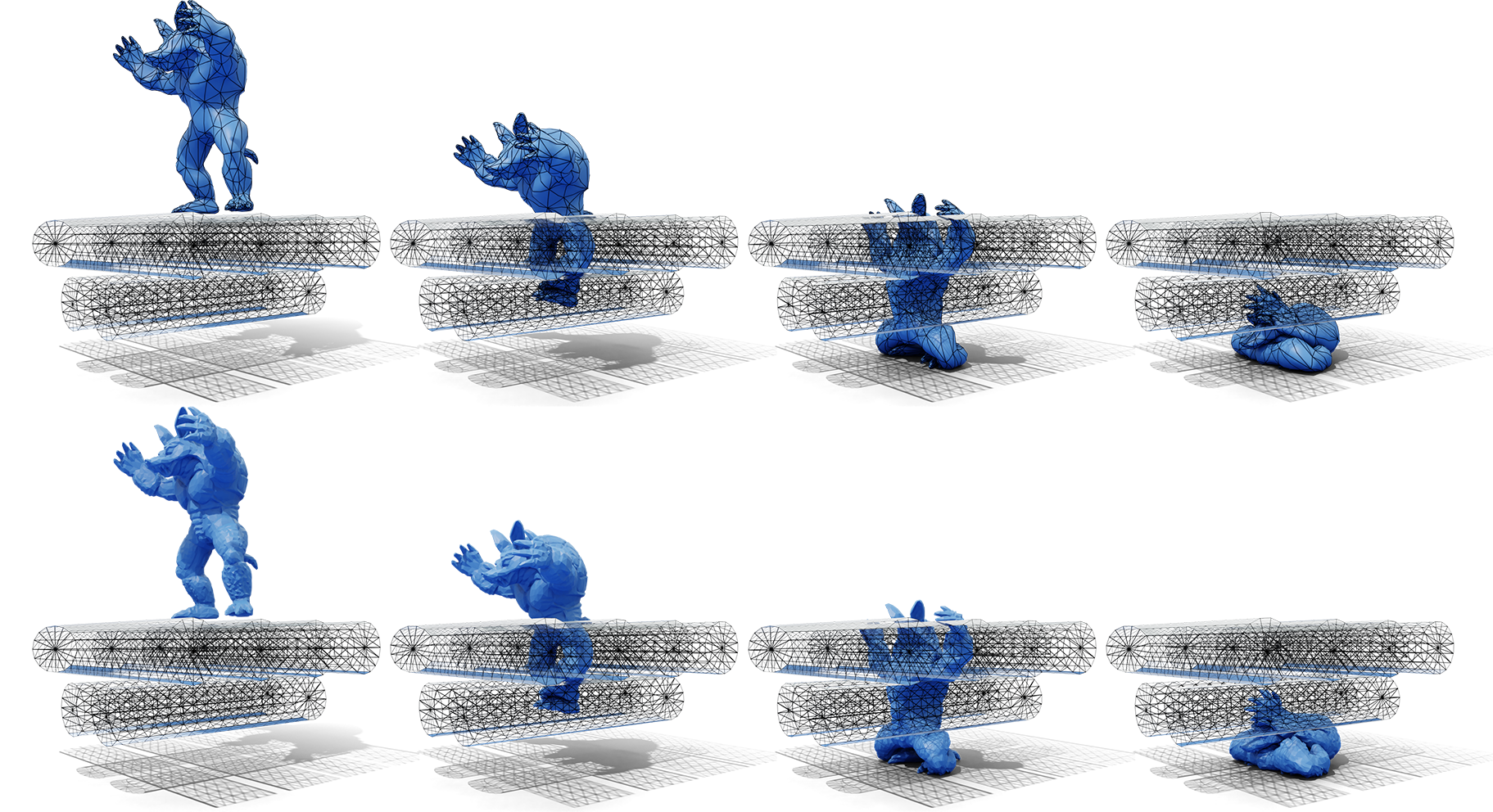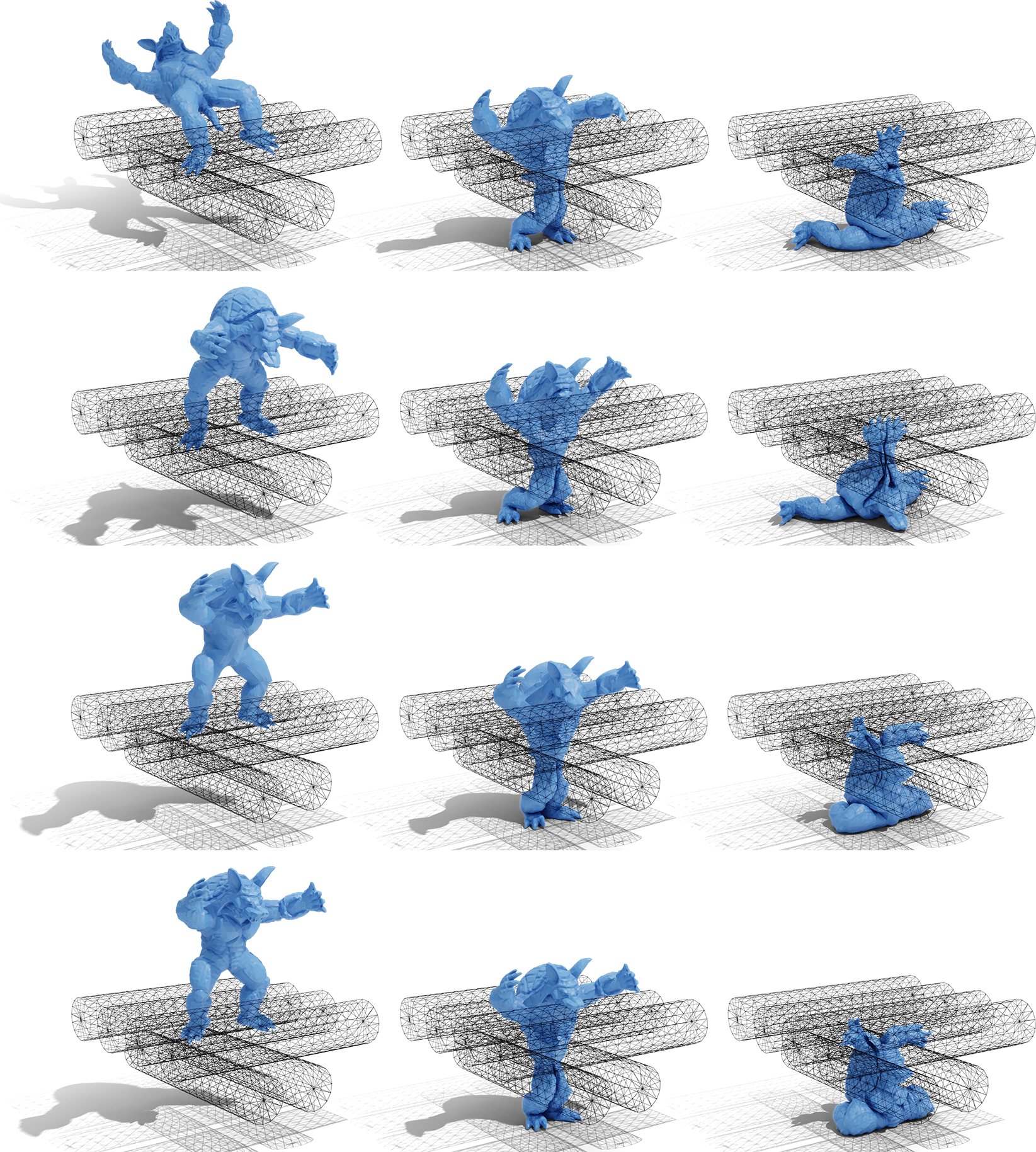
High-order bases provide major advantages over linear ones in terms of efficiency, as they provide (for the same physical model) higher accuracy for the same running time, and reliability, as they are less affected by locking artifacts and mesh quality. Thus, we introduce a high-order FE formulation (high-order bases) for elastodynamic simulation on high-order (curved) meshes with contact handling based on the recently proposed Incremental Potential Contact (IPC) model.
Our approach is based on the observation that each IPC optimization step used to minimize the elasticity, contact, and friction potentials leads to linear trajectories even in the presence of nonlinear meshes or nonlinear FE bases. It is thus possible to retain the strong non-penetration guarantees and large time steps of the original formulation while benefiting from the high-order bases and high-order geometry. We accomplish this by mapping displacements and resulting contact forces between a linear collision proxy and the underlying high-order representation.
We demonstrate the effectiveness of our approach in a selection of problems from graphics, computational fabrication, and scientific computing.

(15 s)
(7m 43s)
(32 s)
(58 s)
(57 s)
(2m 47s)
(6h 7m 12s)
(6h 19m 52s)
(2d 14h 13m 0s)

(2d 13h 19m 0s)
(57m 36s)
(3h 58m 0s)
(7h 14m 32s)


@inproceedings{Ferguson:2023:HighOrderIPC, title = {High-Order Incremental Potential Contact for Elastodynamic Simulation on Curved Meshes}, author = {Zachary Ferguson and Pranav Jain and Denis Zorin and Teseo Schneider and Daniele Panozzo}, year = 2023, booktitle = {{ACM} {SIGGRAPH} 2023 Conference Proceedings}, publisher = {Association for Computing Machinery}, address = {New York, NY, USA}, series = {SIGGRAPH '23}, numpages = 11, location = {Los Angeles, CA, USA} }